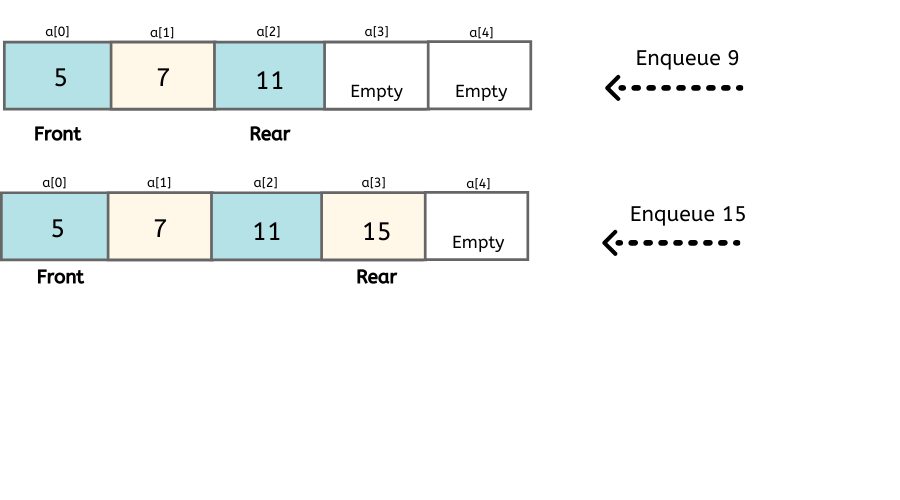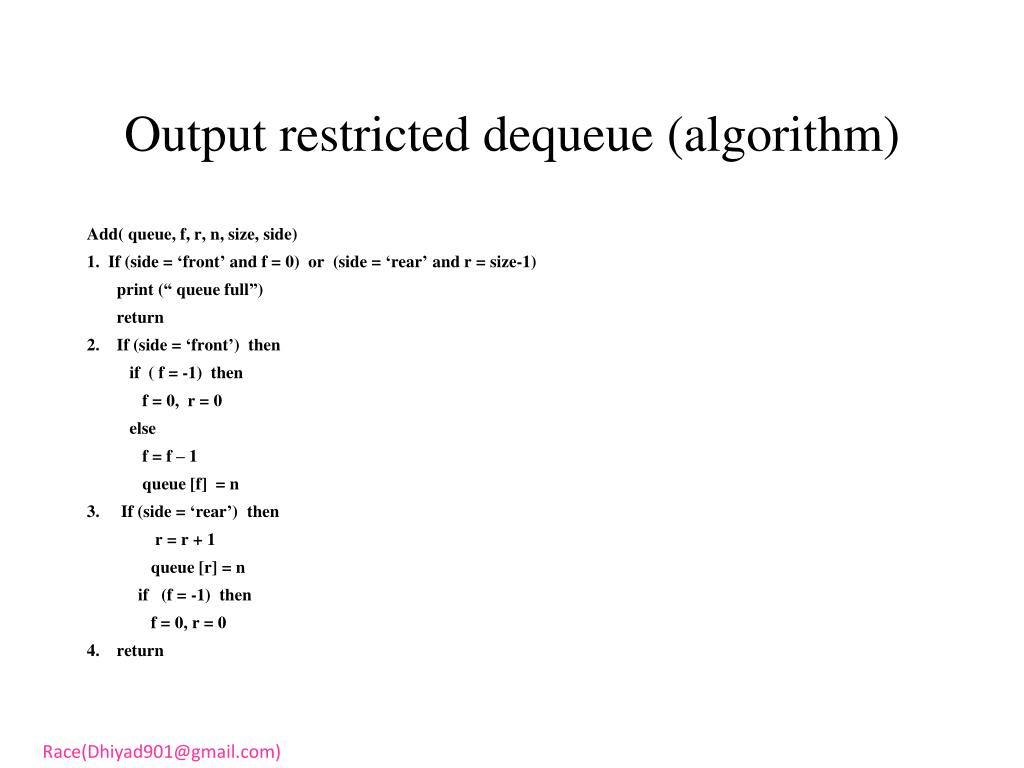

The front and back methods are specific implementations of peek, returning the value at the front or back of the queue, respectively. The empty method, or isEmpty, returns a boolean value if the queue is or is not empty. The length is self explanatory: it returns the length of the queue. The peek operation lets us peek at the value without removing it.ĭepending on the implementation, there may be the following: The dequeue operation permanently removes an element from the queue. The peek operation allows us to view the value of the element at the front of the queue. The second method, deqeue, removes an element from the front of the queue, like an individual getting on a roller coaster.

The first method, enqueue, adds an element at the end of the queue, like an individual getting in the back of a line. There are three primary queue operations, the first two are essential: This is in contrast to the dynamic of a stack, which is LIFO, or Last In, First Out. Like people in line to checkout, the dynamic of a queue is also referred to as First In, First Out, or FIFO. If you print them alphabetically, then The Invisible Man will print before The Time Machine, even though it’s a time machine. Say you need to print the complete works of H.G. As customers join the line, they must wait their turn to checkout. At a department store, for example, customers form a queue to make their purchases. Sounds like a stack, but there’s one significant difference between a queue and a stack: elements are accessed at one end of the queue and added at the other whereas with a stack, elements are added and accessed from the same end, the top.Īn analogy for a queue is, well, a queue. This means we can’t randomly access elements. What is a Queue?Ī queue is similar to an array with one significant difference: elements are only accessible from one end. In this tutorial, you will implement the queue data structure in JavaScript.
TIME COMPLEXITY OF ENQUEUE AND DEQUEUE SOFTWARE
Learning data structures will help you understand how software works and improve your problem-solving skills. It’s not just to ace the technical interview and land your dream job. This dual constant time property makes doubly linked lists a good candidate for the implementation of JavaScript Queue Data StructureĪt some point in your career (today?!) you will want to learn data structures. Also, a regular linked list produces linear time complexity - O(n) - when inserting an item to the end of the list. This can quickly become inefficient as the array grows in size. In contrast, a typical array will produce a linear time complexity - O(n) - when inserting to the beginning because the addresses of all the succeeding items in the array must be shifted by 1. One great benefit of a doubly linked list is the fact that it enables the insertion of new nodes to the beginning and end of the list in constant time - O(1).

This first pointer in the doubly linked list holds the memory address of the previous node while the second pointer holds the memory address of the next node in the list. In simple terms, a pointer is a variable that contains the address of some other object in memory. Each node in a doubly linked list contains data and two pointers. A linked list is a data structure that stores a collection of nodes.


 0 kommentar(er)
0 kommentar(er)
